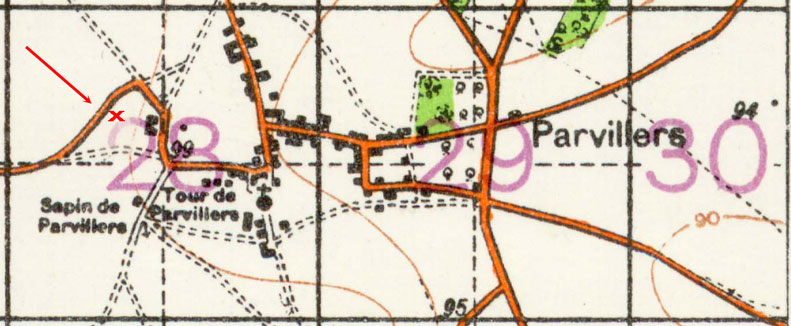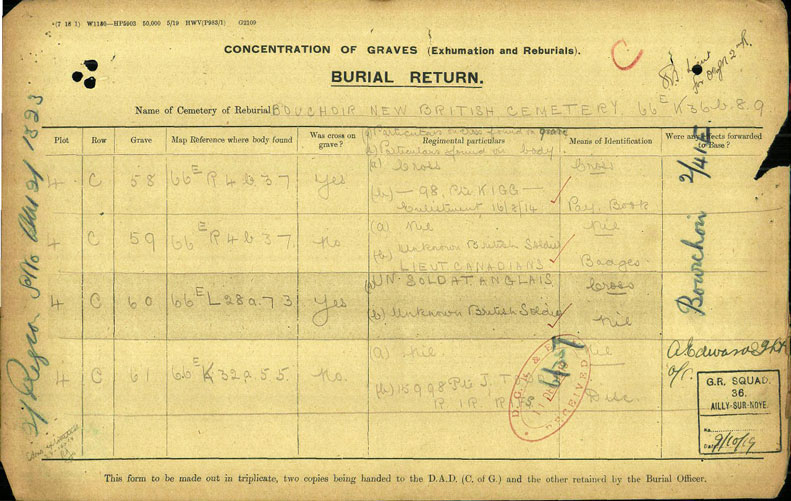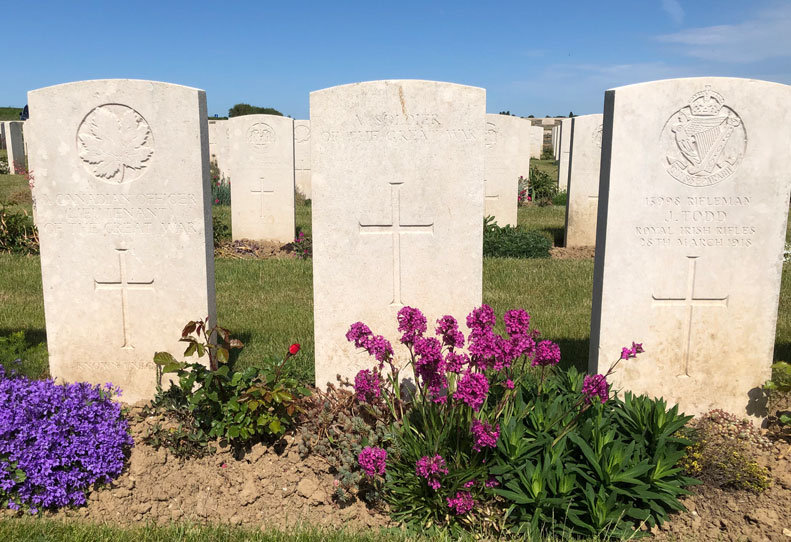![]() In memoriam
In memoriam ![]()
Private William Biggart

William Biggart was born on 28 May 1895 at Bendooragh, Ballymoney, County Antrim, the fifth of nine children of farmer John Biggart and his wife Mary Ann (nee McNeill). His twin brother John died just 28 days later. In 1911 he was still living at Bendooragh with his family, and was working as a tailor.
Biggart enlisted in the North Irish Horse at Antrim on 19 November 1915 (No.1932). He embarked for France on 3 August the following year, where he was posted to the 2nd North Irish Horse Regiment. He joined his unit in the field at Flesselles on 11 August.
In September 1917 the 2nd Regiment was dismounted and most of its men transferred to the infantry. After a brief period of training at the 36th (Ulster) Division's Infantry Base Depot at Harfleur, Biggart was transferred to the Royal Irish Fusiliers on 20 September and soon after posted to the 9th (Service) Battalion – renamed the 9th (North Irish Horse) Battalion. He was issued regimental number 41388 and posted to A Company. He probably saw action with the battalion during the Battle of Cambrai in November and December 1917.
Biggart was one of the many of the 9th Battalion listed as missing following the retreat from St Quentin from 21 to 28 March 1918 during the German spring offensive. In fact he had been captured, suffering from wounds to his stomach and thigh, probably at the action near Erches on 27 March.
He died on 3 April 1918 and was buried by his German captors, according to a Red Cross report, "on the left of a village street near the western exit of Parvillers".
It was some time before Biggart's family learned of his fate. A report in the Northern Whig of 4 October 1918 stated:
Mr. John Biggart, Bendooragh, Ballymoney, has received official intimation that his son, Trooper Wm. Biggart, Irish Horse, previously reported wounded in the leg and missing, has died in a German hospital.
As Biggart's grave was not located after the war, he is commemorated on the Pozieres Memorial, Panel 76, Somme, France.
Commonwealth War Graves Commission records show that after the war, when graves were identified for reburial, only one body was recovered from the western part of Parvillers where Biggart was said to have been buried. The body was found at trench map reference 66E.L.28.a.7.3 and identified on a cross simply as 'Un Soldat Anglais'. Nothing was found on his body to help identify him further, and he now lies in Bouchoir New British Cemetery plot IV, row C, grave 60, identified as an unknown soldier – 'Known unto God'.
The map and photograph below show the location where the body was found, which coincides with the description "on the left of a village street near the western exit of Parvillers". Therefore the unknown soldier at Bouchoir may well be Private Biggart, although we cannot be absolutely certain.



Burial Return showing the location that the body was found.

The unknown soldier at Bouchoir New British Cemetery. This may be the grave of Private Biggart.

Biggart's name on the Pozieres Memorial
Private Biggart's younger brother, Rifleman John Biggart of the 14th Battalion, Royal Irish Rifles, was killed in action at the Battle of Langemarck on 16 August 1917, aged 19.
Images 1, 3, 5 and 6 Copyright © Phillip Tardif with all rights reserved as set out in this Use of Material policy. Burial return sourced from the Commonwealth War Graves Commission website.
